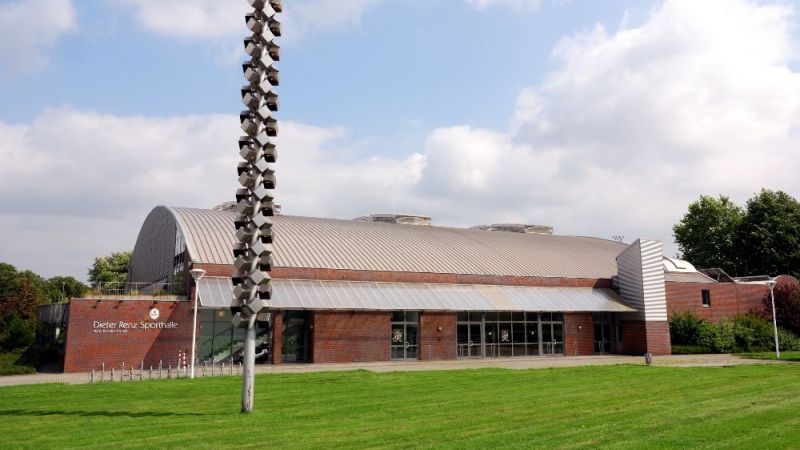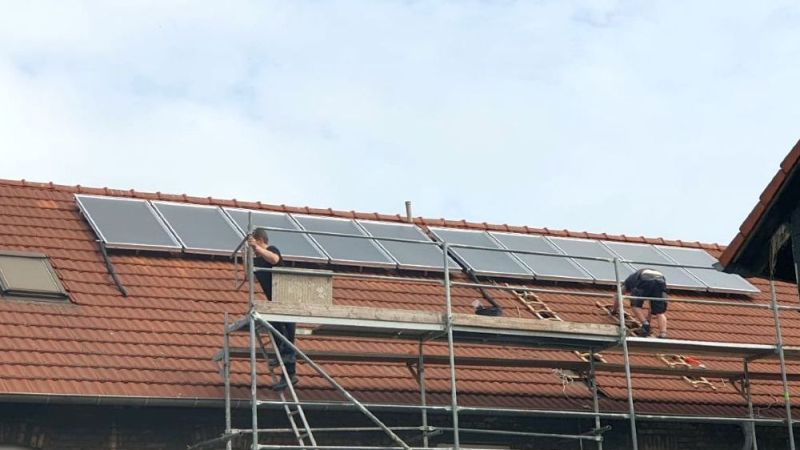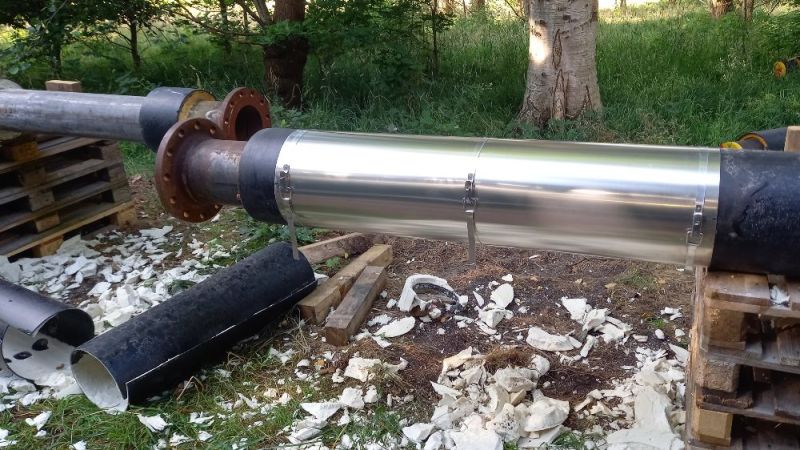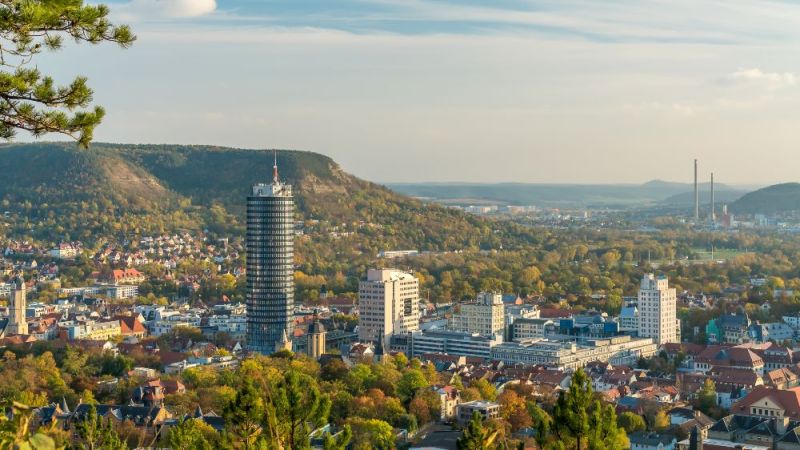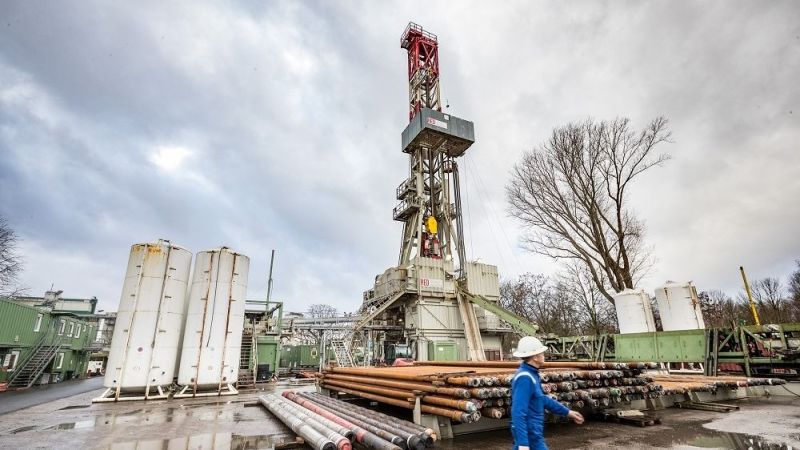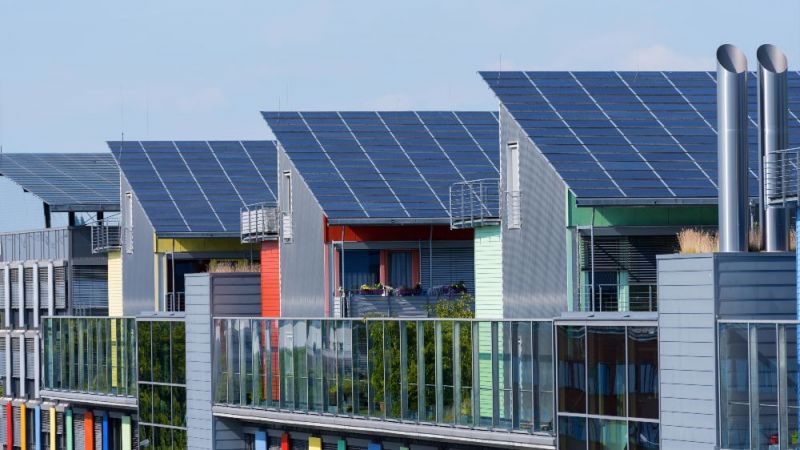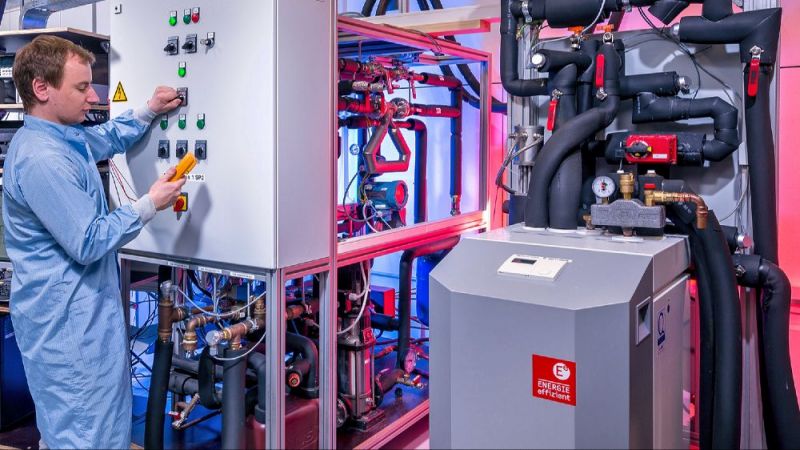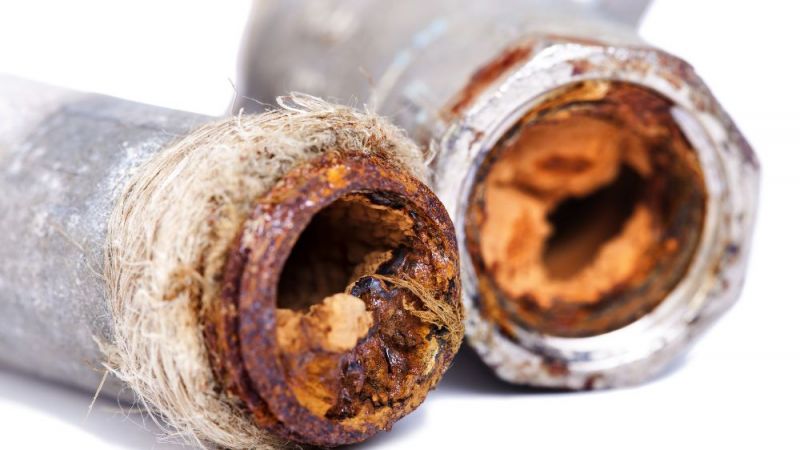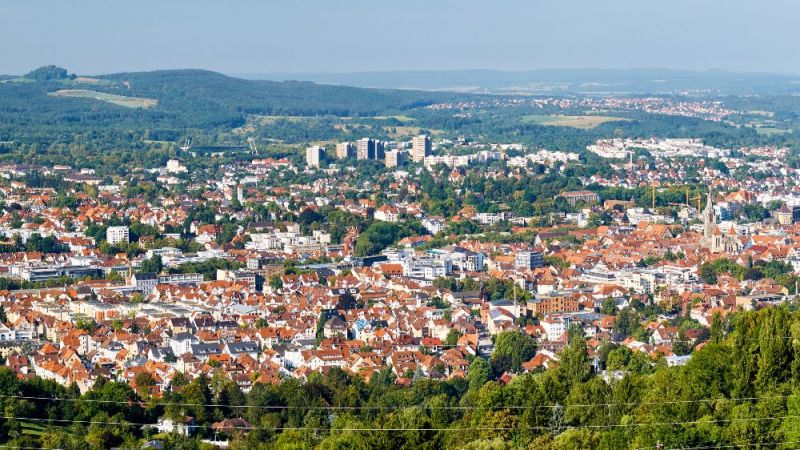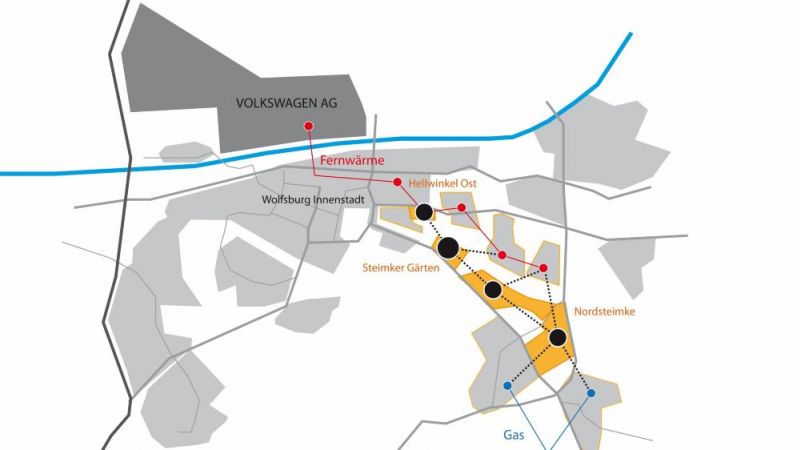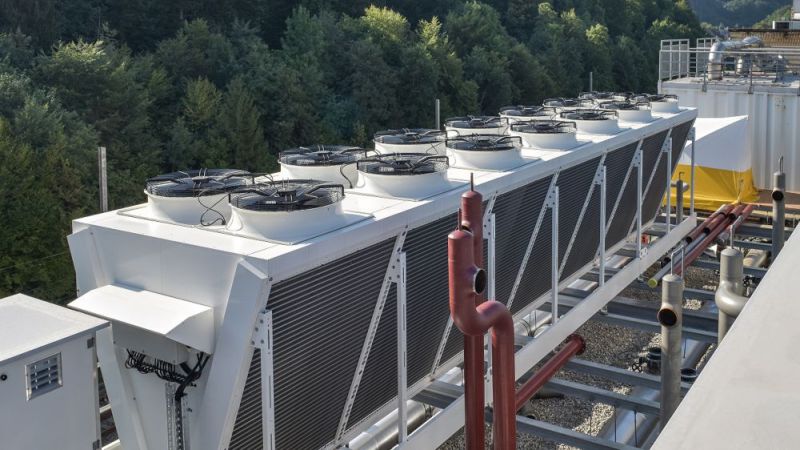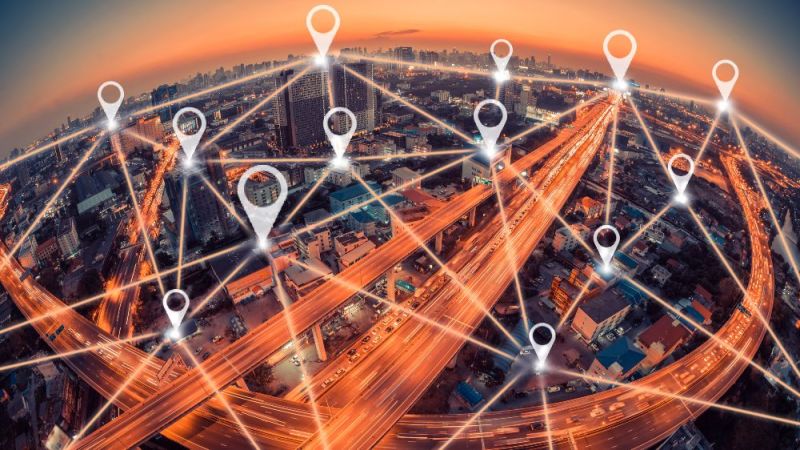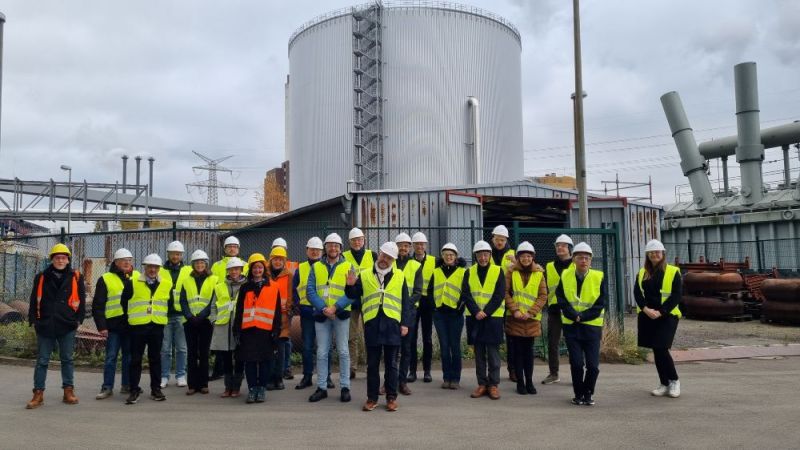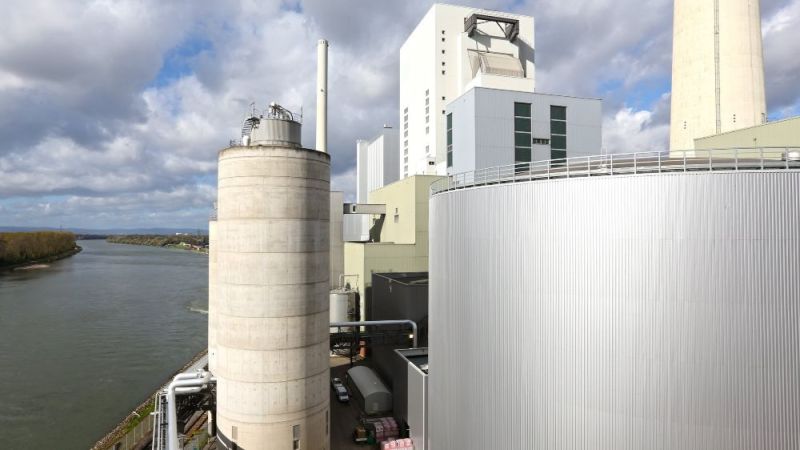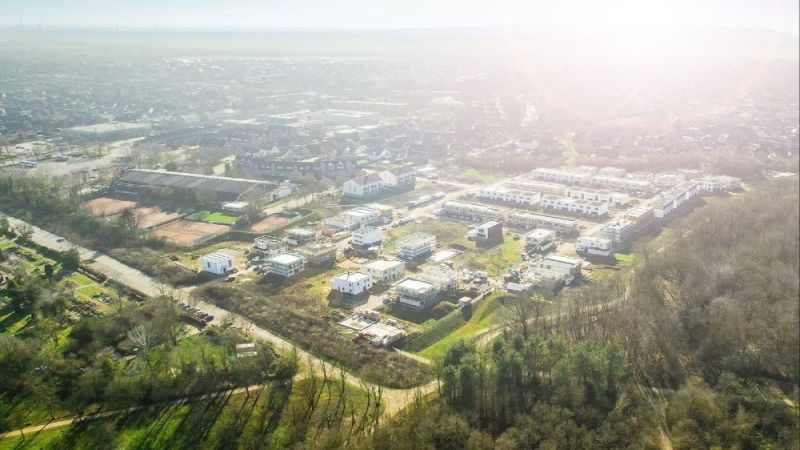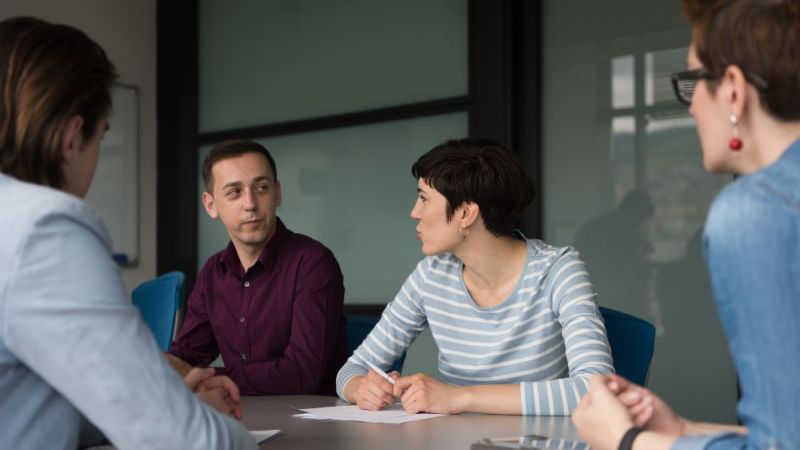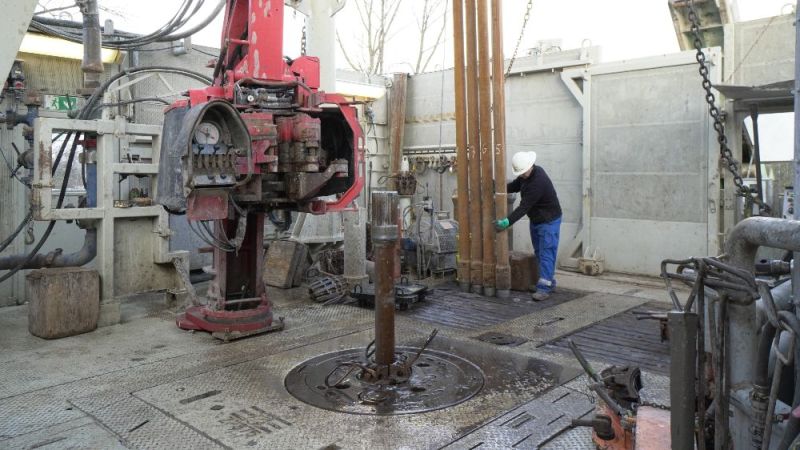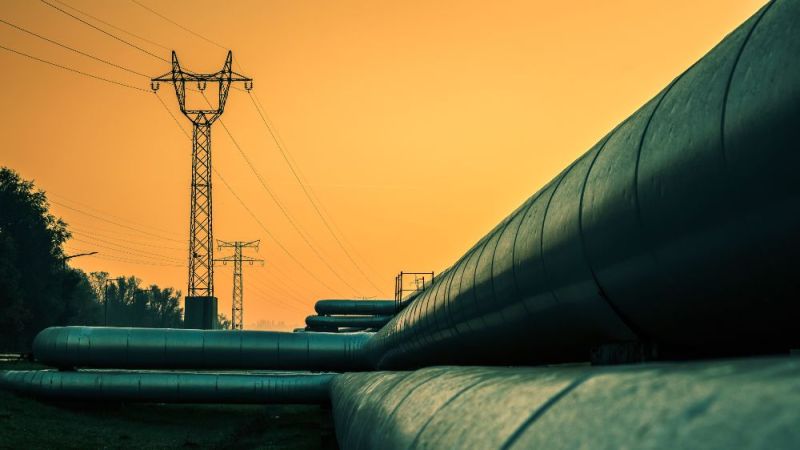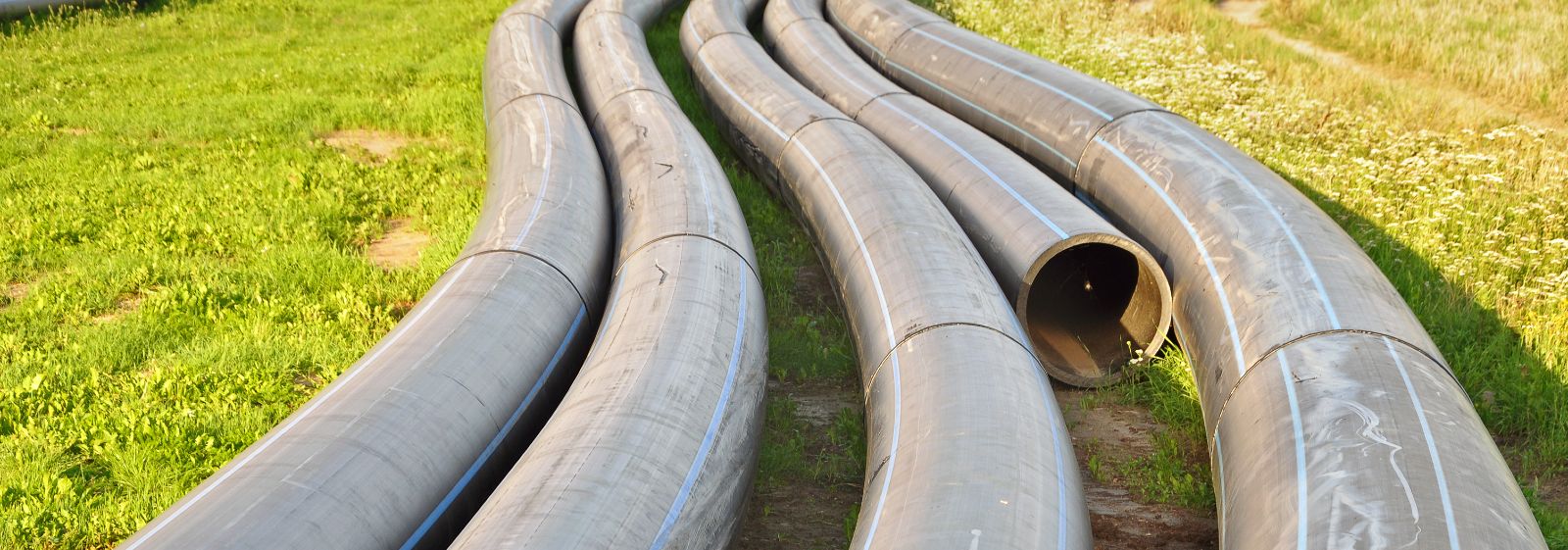
TransUrban.NRW
Low Temperature Replaces Coal Infrastructure
Many cities and municipalities have committed themselves to ambitious climate protection targets for reducing CO2 emissions. Transforming their heating and cooling supply could make a significant contribution to this. Integrating waste heat on a large scale, directly feeding in renewable energy, and consistently using sector coupling make up the foundation of a successful transformation of our heating systems. Fifth generation energy systems provide the infrastructure for this goal and offer the potential for an economically viable transition to a climate-friendly supply. How this might look in practice is now being investigated by experts at four locations in North Rhine-Westphalia.
TransUrban.NRW is the second living for the energy transition to be launched. The living labs for the energy transition put innovative technologies into application and test them on an industrial scale and under real-world conditions.
Paving the way for a low-temperature system
TransUrban.NRW aims to show how traditional district heating supply regions in coal-mining areas can be transformed into low-carbon supply systems. At present, the district heating networks are operated at high system temperatures so that they can use heat from coal-fired power generation and high-temperature waste heat. This means that the high-temperature and steam networks are unable to efficiently incorporate renewable energy (for example geothermal energy or waste water heat) and low-temperature waste heat sources into the supply. TransUrban.NRW will show how the high-temperature energy infrastructure can be converted to a low-temperature energy system. This also changes the role played by district heating network operators and municipal utilities: They go from being energy suppliers to providers of digital energy platforms.
Research focus
Fifth generation energy systems form the foundation of a gradual transition from a heating supply using fossil fuels to one using renewables. The concepts used here are Anergy and LowEx systems in a temperature range from around 10 to 40 °C. They drastically reduce system temperatures compared to district heating networks. The result is that low-temperature waste heat and renewable energy can be used on a large scale. The new systems also allow heat to be shifted between producers and consumers: For example, buildings obtain waste heat from other buildings, computing centres, or industrial plants that have to be cooled at the same time. The required low-temperature networks can either be newly built or integrated into the existing infrastructure as needed.
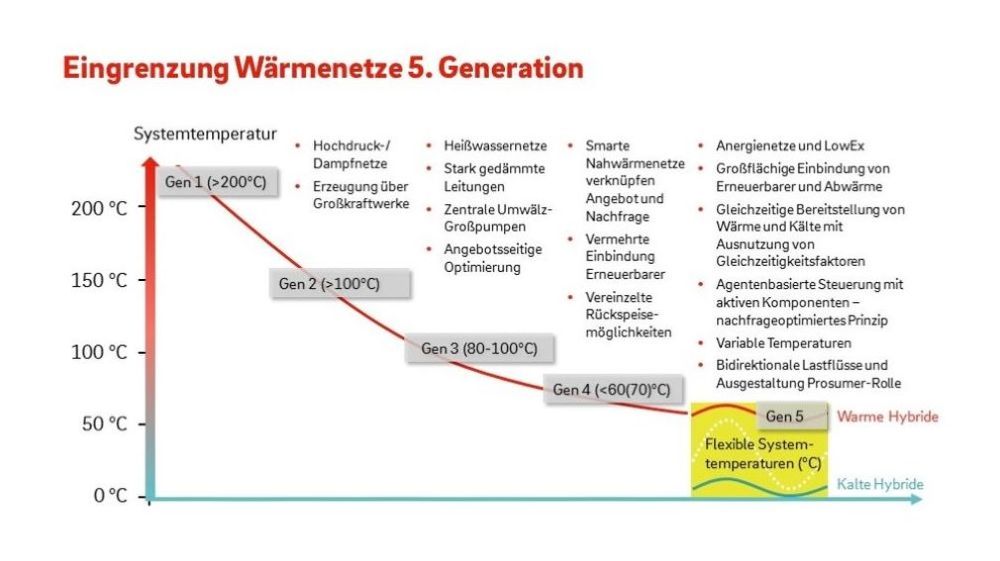
Heating goes electric
The goals this project is pursuing can only be achieved if the heating supply is electrified. This means that power-to-X technologies play an important role: The heating, cooling, and electricity sectors are coupled together in an intelligent system. The result is that, for example, local solar power with a high share of renewable energy can support the heating supply from heat pumps. One requirement for this is that there is intelligent control of the network temperature. Seasonal or short-term stores increase the flexibility of this control.
New methods demand new business models
If the heating supply is largely based on electricity, the operators and customers are dependent on the “electricity price” model of the energy sector. In the current situation, this is not very economically attractive for energy suppliers. In TransUrban.NRW, the experts study how the regulatory framework can be optimized and incentives offered. In addition, they develop new business models for operators, covering topics such as cooling supply, e-mobility, and heat pump operation based on electricity prices. They also take into account the fact that more and more customers are becoming “prosumers”, meaning they act simultaneously as energy producers and consumers.
Plans are being made for the fifth generation energy systems to be piloted in inner-city districts. Each of the four districts operating as regulatory sandboxes has a different structure and represents one focus of innovation. The results can then be transferred to any similarly structured sites in Germany. Heating and cooling are generated and distributed in the four districts in a decentralized manner.
Each district has its own low-temperature local heat network and an affiliated energy platform.In the inner-city quarters, the 5th generation energy systems are to be tested in practice. Each of the four living lab quarters represents a focus of innovation and differs in its structure. The results can be transferred to similarly structured locations in Germany. The generation and distribution of heating and cooling is decentralized in the four quarters. Each neighborhood has its own low-temperature local heating network and, linked to it, its own energy platform.
The four districts in profile
A sustainable residential and commercial quarter is to be built on the former Ruhrkohle AG site in the next few years. A 5th generation energy system is planned to cover a heating demand of about 8,000 MWh p.a. and a cooling demand of about. 4,000 MWh p.a.. The following measures are planned:
- Low-temperature waste heat is to be sourced from the adjacent chemical park, photovoltaics will be used for the renewable self-power supply of the technical centre and the EV charging infrastructure.
- Optimisation of the heat pumps' own electricity use and load management, in particular via large-scale thermal heat storage units and buffer storage, as well as integrated optimisation of all components to use the system itself as a storage unit.
- Heat exchangers in all new buildings for passive cooling of the buildings without the need for active generation
- Retrofitting of the existing building stock: climate-friendly supply of the existing stock by means of fan coils / air-conditioning cassettes in addition to existing radiators and thus use of the low-temperature input energy from the thermal network instead of a CHP-based supply.
- Development of business models for the upgrading of municipal utilities for the identification and widespread use of low-temperature waste heat.
Key data of the district
Gross floor area (GFA): 103,000 m²
Mix of uses/building types: 82,800 m² office & commercial, 20,200 m² residential & retirement home; 49,000 m² refurbishment of existing buildings, 54,000 m² new buildings
Expected building standard in residential development: KfW 55
Next to the former freight station site in Mönchengladbach, a mixed-use quarter with approximately 220,000 m² of residential/commercial space is being built. A demand of about 10 GWh/a heat and about 3 GWh/a cooling for the buildings of the Seestadt mg+ quarter is forecast. To supply the individual properties, it is planned to test a 5th generation energy system for the first time. The following measures are planned, among others:Investigation of the integration of geothermal energy via a geothermal probe field under the lake with different types of integration and optimisation.
- Simulation of the direct use of the lake as a renewable input energy source (lake absorber) and comparison of variants with a geothermal probe field.
- Optimisation of the 5th generation energy system and heat pumps in terms of availability of supply-dependent energy based on weather forecasts (solar radiation),
- Investigation of a supply of the surrounding building stock via the energy system of Seestadt mg+,
- Conducting citizen surveys
- Development of business models to encourage connection to the system.
Key data of the district
Mixed-use quarter with 220,000 m² gross floor area (GFA), of which: residential 160,000 m², commercial 35,000 m², retail 25,000 m², day-care centre 200 m².
Expected building standard in the residential development: KfW 55
Special features: The district is located in a region of structural change.
On a 68,000m2 site in Erkrath, the old industrial estate "Am Wimmersberg" is being converted into a residential quarter. Medium-sized residential quarters like this are the most frequently built type of quarter in Germany. With the implementation of a 5th generation energy system, the provision of cooling in social housing, among other things, is being investigated. The following focal points are being investigated here:
- Business models for affordable supply of space cooling
- Investigation of asphalt collectors as an energy source, also for regeneration Geothermal field
- Use of a geothermal probe field as seasonal storage, small-scale design based on cooling demand
- Investigation of the potential of well water heat as an energy source
- Development of concepts for heat network systems with pronounced differences in altitude totalling 30 metres.
Key data of the district
Gross floor area (GFA): 76,000 m²
Mix of uses: residential 75,400 m² new building and day care centre, 600 m² new building
Residential units: approx.765
Expected building standard in the residential development: KfW 55
The former coking plant has lain derelict since 1993. A purely residential quarter is being built here on 40,000 square metres. The heat demand is made up of approximately 500 MWh for heating and around 400 MWh p.a. for domestic hot water. On the cooling side, only passive cooling and a connection rate of 80 % are assumed. With passive cooling, cold water from the geothermal field flows through the underfloor heating and thus extracts heat from the living spaces. The so-called "tempering" corresponds to approx. 80 MWh p.a. of cold. The following aspects are examined here:
- 5th generation energy system for small residential districts with low settlement density: success factors and possible lower limit for district size
- Business models for cooling supply
- Integration of geothermal energy as an energy source
- Use of ambient air as an alternative energy source
- Success factors for post-densification district heating systems
Key data of the district
Gross floor area (GFA): 20,000 m²
Mix of uses: residential
Expected building standard in the residential development: KfW 55
30.05.2023
Avacon Natur GmbH
https://www.avacon.de/
info@avacon.de
Tel.: +49 (800) 7 20 08 00
Catella Project Management GmbH
https://www.catella.com/de/deutschland
info@catella.se
Tel.: +49211 90993500
RAG Montan Immobilien GmbH
https://www.rag-montan-immobilien.de
Tel.: +49201 3780
RWTH Aachen, E.ON-ERC, Lehrstuhl für Gebäude- und Raumklimatechnik
https://www.eonerc.rwth-aachen.de
secretariat-erc@eonerc.rwth-aachen.de
+49(0)241-80-99566
Fraunhofer-Institut für Solare Energiesysteme ISE
http://www.ise.fraunhofer.de
info@ise.fraunhofer.de
Tel.: 0761/4588-5351
aedifion GmbH
https://www.aedifion.com/
info@aedifion.com
Tel.: +49221 98650770
heatbeat engineering GmbH
https://heatbeat.de/
kontakt@heatbeat.de
Tel.: +49911 12032514


